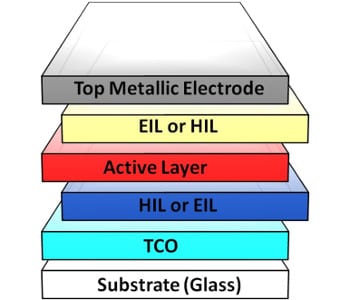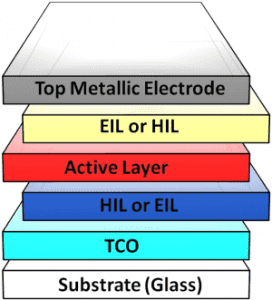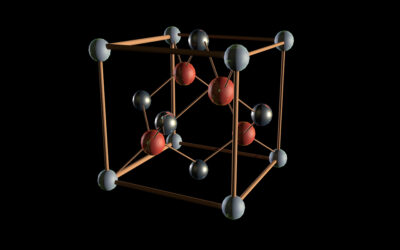Polymer solar cells have emerged as an promising alternative approach in photovoltaic applications, as they are cost-effective, flexible, lightweight, and potentially disposable, compared to commercial silicon-based devices. While these advantages have attracted increasing attention to developing polymer solar cells, many questions concerning the fundamental mechanisms of device operation remain to be answered, and an outstanding one is the correlation between open-circuit voltage, a critical parameter that directly governs the efficiency of solar cells, and work function of material layers.
Recently, researchers led by Thomas M. Brown and Aldo Di Carlo at University of Rome, Italy, have conducted a systematic survey of more than 10 electron and hole collecting contact materials, ranging from conductive polymers to transparent conductive metal oxides, regarding their influence on the open-circuit voltage of P3HT:PCBM (acronyms for poly(3-hexylthiophene-2,5-diyl) and phenyl-C61-butyric acid methyl ester, respectively) solar cells. By varying material combinations and deposition techniques, they are able to build their statistical analysis on a large amount of data from 23 different device architectures.Using simulations for bulk-heterojunction solar cells, a common device configuration that was used in this study, the researchers find that open-circuit voltage shows a linear dependence on the work function difference when the difference is within 1 volt. Outside this regime, open-circuit voltage reaches saturation and hardly changes with the work function difference.
As Dr. Brown comments, “the implications are clearly that narrow density of states of the polymer semiconductor, either by chemical design or by morphological control, are beneficial”. And therefore, “it is always best to employ those contacts that are well into the saturation regime so that the open-circuit voltage becomes insensitive to the typical variations that occur during device preparation”, as he further suggests.
These results are likely to take the researchers to their next step to start the “investigation and development of interlayers and contacts which can be deposited utilizing both large area processing and more environmentally friendly solvents”. Meanwhile, they are also interested in exploring the influence of contact materials and interfaces on device stability. In addition, Dr. Brown has mentioned that, through comprehensive models with other approaches, “our study can be extended to understand even in greater depth the interplay and the effect of the contacts, energetic disorder and the real morphology of photo-active layers on all of the photovoltaic parameters of the polymer solar cells”.


















